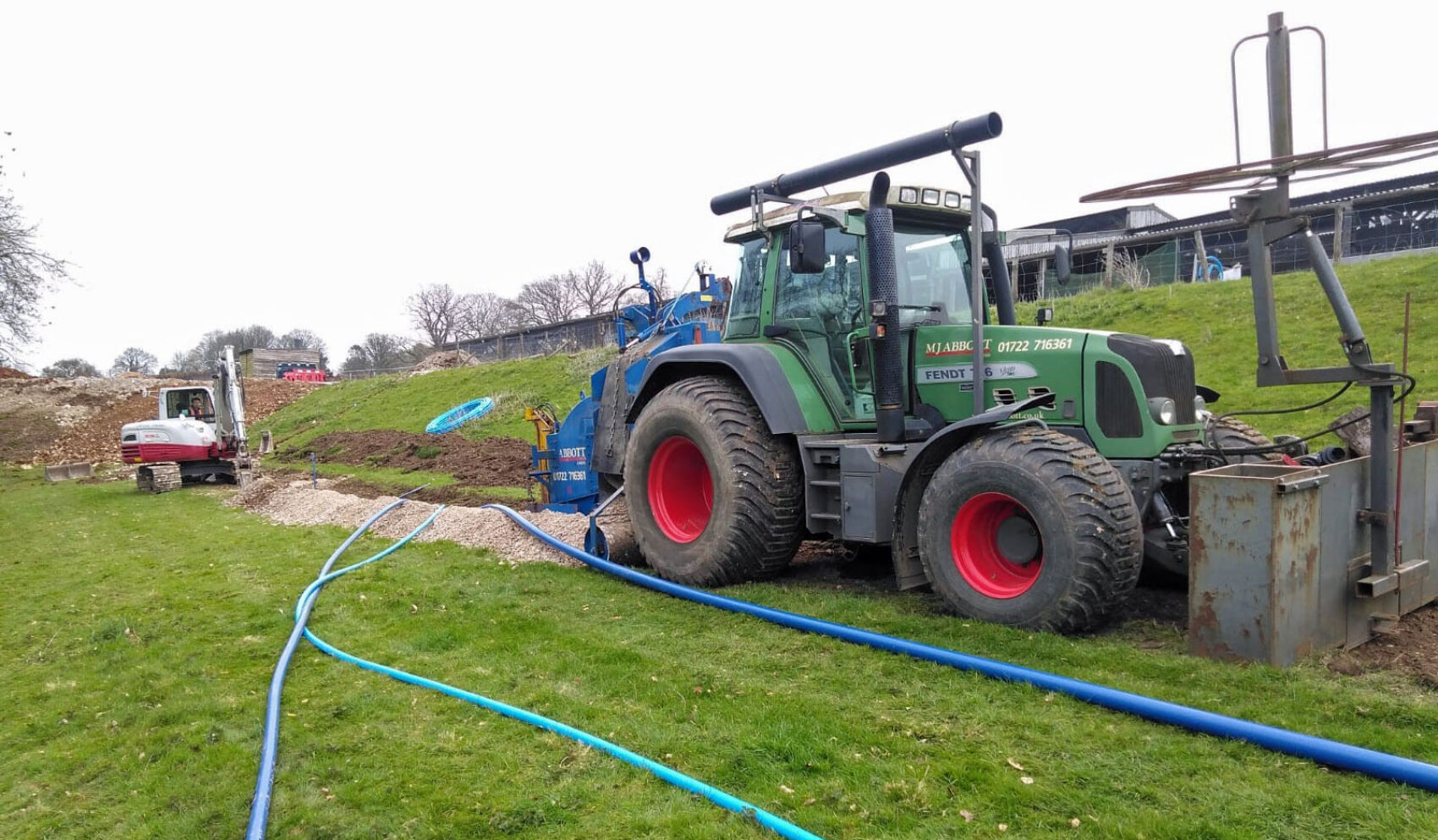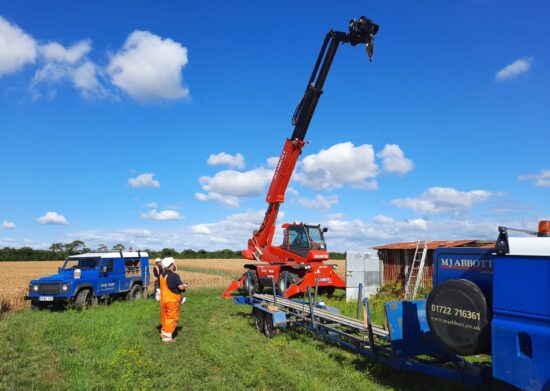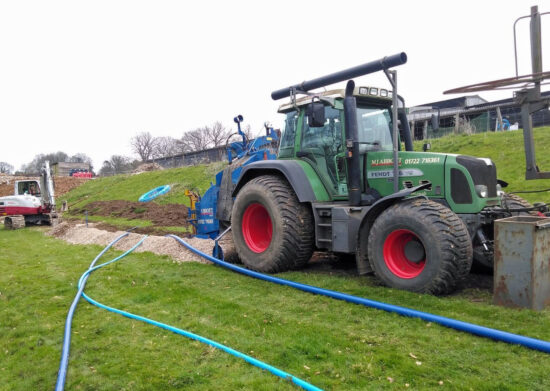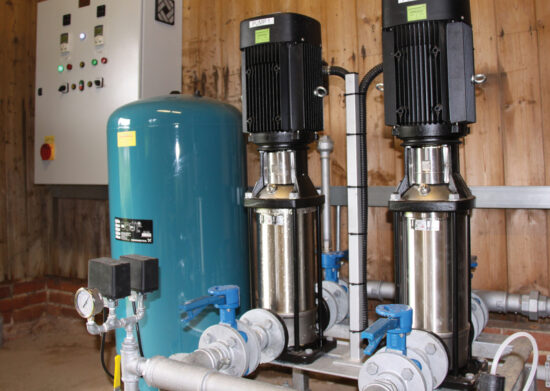

Project challenges
Clever design needed to overcome elevation differences
The estate encompasses some 4250 acres of rolling countryside, with elevational differences of 180m between its highest and lowest locations. It became obvious that some clever design would be needed, to come up with a system that would allow water to be delivered to both the highest and lowest points of the estate without exceeding the pressure limitations of the pipework.
Previous investment in the water system had been undertaken which focused on the village areas, with recently installed booster pumps and a water storage tank, and our design had to incorporate this existing equipment to save on reinvestment.
A further challenge to the design was that the village sits at a relatively high level on the estate, with acres of pasture land at a lower level than the village. Consideration therefore needed to be given to potential leakage in the lower ground robbing pressure from the domestic users. The new system would need to be installed without damage to the existing system during installation.
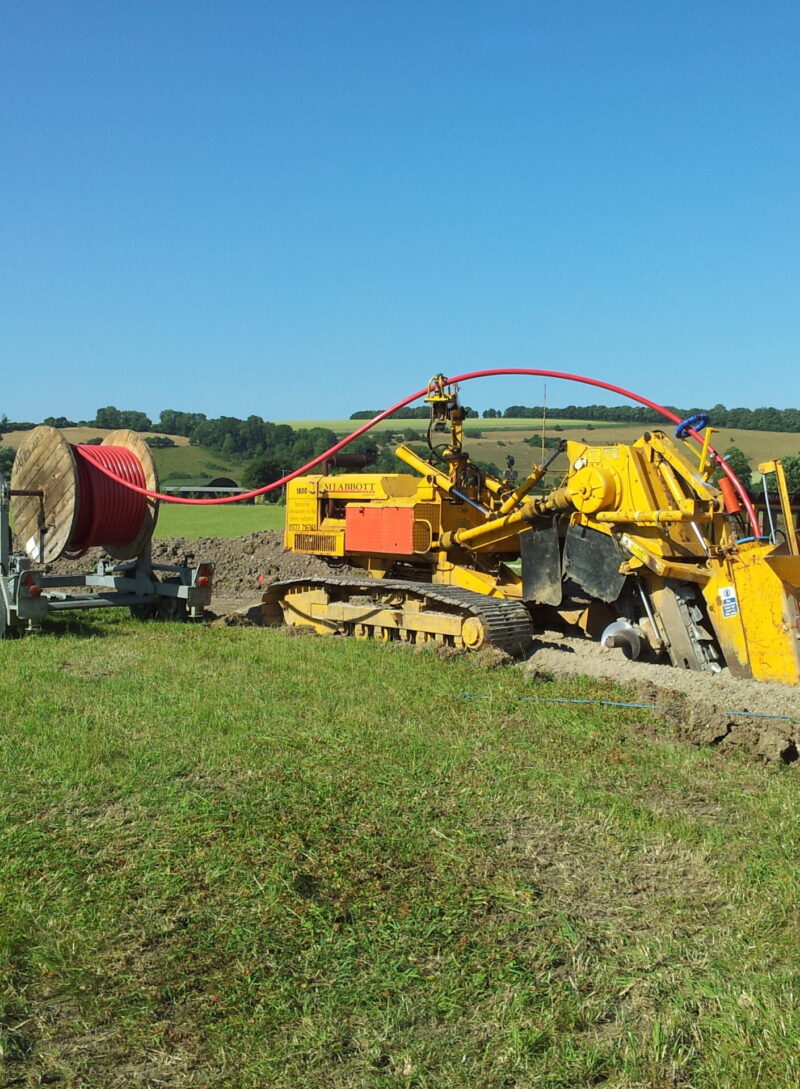
Our approach
Separation of water supplies
Taking into account the existing pumping equipment and its limitation for the borehole pumps and booster pumps, the huge distances between the borehole, the village and the highest and lowest points of the estate presented many, many challenges. We considered using the existing boreholes to pump to the highest location on the farm and install a new reservoir, however this would have meant replacing both the existing borehole pumps (a further expense), combined with a pumping pressure of over 18 bar. We explored the potential of using the existing booster pumps to send water to the highest point, however the pumps were too small and there was potential for losing pressure in the village should a future leak occur.
With pipe pressure limitations at 16 bar, and even with the installation of several pressure reducing valves which would have seen pressures lowered in some areas to protect pipelines, but then having a knock on effect of not having sufficient pressure to climb the next hill.
After many site visits, site meetings and surveys, we took the view of separating the water system into two supplies.
(1) Potable water system for domestic consumption which would be treated with UV light to protect against bacteria, and laid with blue HPPE water pipe.
(2) A raw water system for the farm and estate, which was untreated, laid with black HPPE pipe.
By taking the decision to separate the supplies, this had many benefits to the operational and investment objective:
- Treated water for domestic use only (no unnecessary water treatment for agricultural use)
- Should leakage occur in the lower parts of the system on the estate, water pressure would not suffer for the domestic users
- It allowed water to be pumped to the highest part of the estate on a section of high pressure 16 bar pipeline, without excessive pressure being experienced in the village
- By installing a 36,000 litre reservoir at the highest part of the estate, 4 hours pumping a day from a well would allow 20 hours of gravity flow around the entire estate to all troughs, pheasant pens and also for crop spraying
- It allowed the previously installed booster pumps to remain in place without the need for reinvestment.

Outcomes
Complete success
The project took around 10 months to complete from breaking ground to final commissioning, and it was a complete success.
The new system comprised of:
- 28,000 linear metres of water pipe (25mm, 32mm, 63mm & 90mm)
- 30 no. new galvanised steel water troughs
- 14 no. new pheasant pen supplies
- 4 no. new fire hydrants
- 5 no. road crossings using in-house Streetworks qualified operatives
- 8 no. strategically placed water meters to monitor abstraction, usage and potential leakage.
MJ Abbott Ltd have carried out an extensive installation of a completely new, bespoke water system for us that has taken over two years to complete from inception to fruition. Through this whole process the service, advice and quality of work has been exemplary. Ever present has been an attention to detail from all parties and a willingness to go out of scope, if necessary, without being asked. The quality, finish, and end result, more than proves the old adage that “you get what you pay for”.
We are looking forward to having an association with them for many years to come.
Al Brookes

